The Odd Hybrid Businesses That Defined the Early American Service Sector
Multi-tasking establishments were once the norm in America. What happened to them?
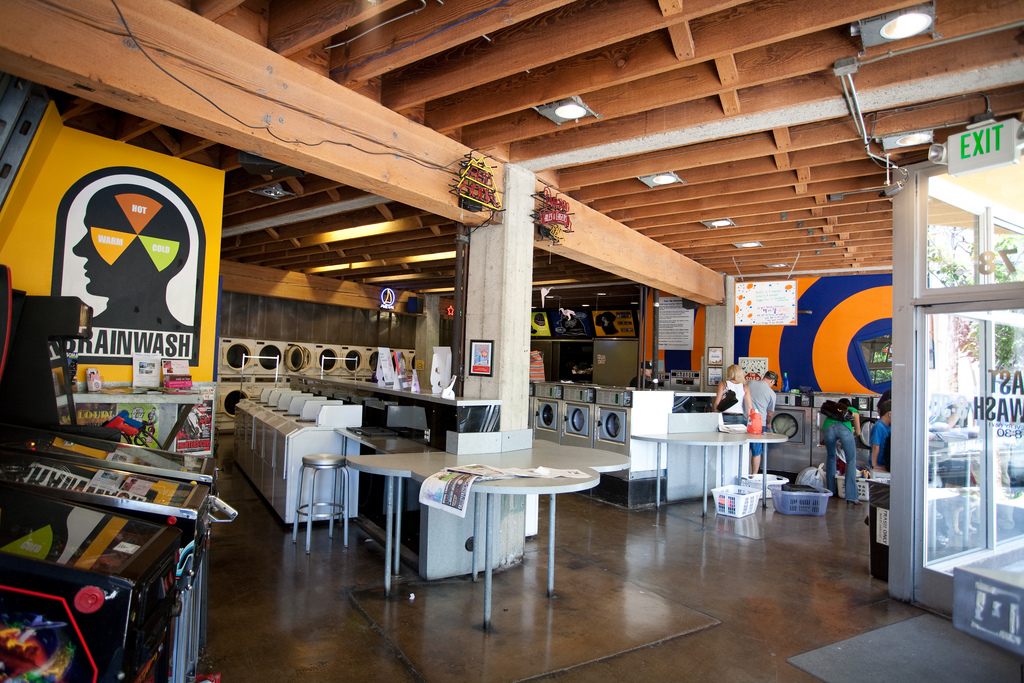
A San Francisco Laundromat/Coffeeshop hybrid, with arcade games. (Photo: Stepan Mazurov/CC BY-SA 2.0)
We take for granted the supposedly neat lines that divide industries from each other. We know that a bank is not a breadline, an elevator is not an automobile. But these distinctions between different sectors of the economy were never inevitable. They are the product of human choices and historical forces that have unfolded over time.
The entire service sector, comprised today of overlapping and competing industries like bars, restaurants and hotels, actually descended from a single one-stop shop: the colonial tavern. Until the 1700s, the western world offered a very narrow range of organizational types for selling domestic services as discrete commodities. The main businesses on offer were taverns, coffeehouses, and brothels—and they had to provide nearly everything a discerning consumer might want.
Each offered a broad array of products. In a tavern, for example, you could buy a drink; get a meal or a bed (that you might have to share); gamble; see a play, circus act, or sermon by an itinerant minister; learn to dance or speak German; or buy legitimate, black-market, and illegal goods or services.
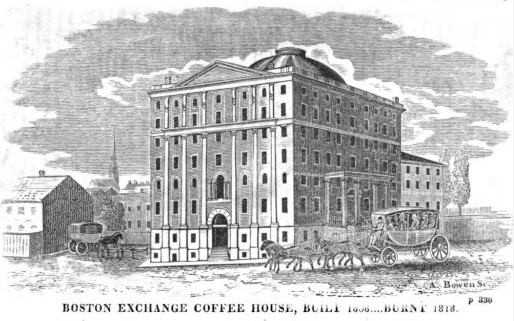
Boston Exchange Coffee House, 1828. (Photo: Public Domain)
As tavern historian Kym Rice has shown, many tavern-keepers simultaneously plied professions or trades like doctor, cabinetmaker, rice planter, or silversmith. Coffeehouses also generally served as informal stock exchanges, sites of political debate, and sometimes slave markets.
Boarding houses proliferated in the second half of the 18th century, but it wasn’t until the early 19th century when a thriving population of hotels (an American innovation), restaurants (imported from France) and barbershops (much fancier than today) developed in the seaboard cities of America—a modern service sector.
In 1809, just as these modern service industries were beginning to differentiate themselves from taverns, the Boston Exchange Coffee House became the first famous establishment to recombine those newly-differentiated functions in a novel way. A huge colonnaded atrium served as an indoor stock exchange, but patrons could also stay in hotel rooms, visit a bar, coffeehouse, or post office, and use the onsite banquet halls and office space. It didn’t prosper; the financiers stayed outdoors, and the building burned down in 1818.

The interior of a standard Pullman Car, c. 1910. (Photo: Library of Congress/LC-DIG-det-4a24382)
Ever since, hybrid service firms have come and gone. The largest and most famous was the Pullman Company, founded in 1862 by George Pullman and later run by Abraham Lincoln’s son, Robert Todd Lincoln. The Pullman Company manufactured sitting, sleeping, and dining cars for the railroad, sold them, and then leased back the concession providing services to passengers.
The Pullman Company was unusual among hybrid companies for its size and power, its longevity, and the fact that its two sides bridged service with manufacturing, rather than with another service or sales industry. There was also a strong division between its employees. Pullman employees who made and drove the railroad cars were white. The men and women who waited on passengers inside the cars were African Americans who suffered from mistreatment and exceptionally low pay, and later created an influential labor union, the Brotherhood of Sleeping Car Porters, to fight for better working conditions.
Usually, hybrid service firms have connected services to sales, transportation, or other services. Sometimes particular industries have been the common denominator in hybrid firms with wildly different interests. In Boston in 1829, then the cutting edge of the growing service sector, the fad was to combine a boarding house with another function, like an employment agency. Adolf Biornberg’s boarding house and shipping office at 233 Ann Street seems almost sane when compared to the boarding house-undertaker combo that also called the city home.
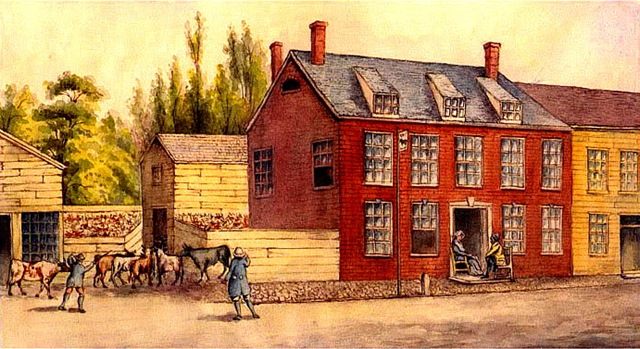
Bull’s Head Tavern in New York, c. 1800. (Photo: Public Domain)
The boarding house hybrid attempted to optimize efficiency—using one house for two businesses, and trying to fit work for each side of the business in during the slower hours of the other business. It also made efficient use of the proprietor’s multiple sets of skills, and his or her reputation to build two pools of customers.
If hybrid service businesses once helped businessmen reach greater efficiency, today the efficiency of the consumer is often the more important goal. The dominant service-hybrid form in New York City for the last few years, the laundromat hybrid, is the clearest reconfiguration of a system that had been frustratingly wasteful of time for customers—sitting around waiting for clothes to dry. By filling this downtime with another activity, these service hybrids help customers fill their time more productively. Most of the new laundromat hybrids harken back to the Duds ’n Suds chain of the 1980s, tying laundry to food and drink.
But really, the laundromat plus bar/restaurant/café/empanada and ice cream stand/video arcade/pawnshop/social justice organization is so 2014. What’s next?
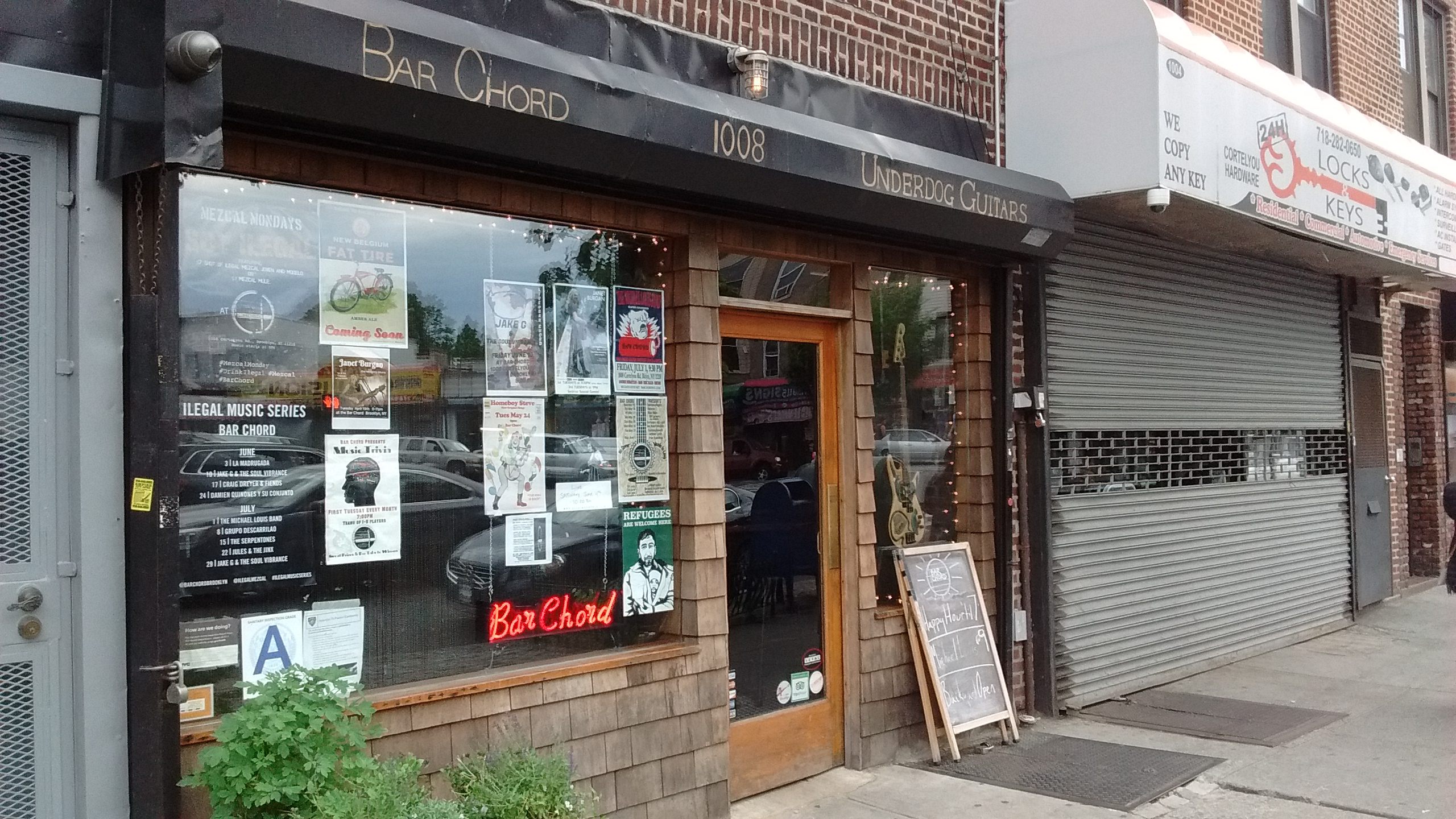
The exterior of Bar Chord. (Photo: Daniel Levinson Wilk)
Maybe other kinds of sales-service hybrids, like the Brooklyn establishments Tygershark, a surf shop and Korean restaurant, and Sycamore, a bar hidden behind a florist. Down the road from Sycamore is Bar Chord, a watering hole that often hosts live music and claims on its façade to be a store for used guitars. Sure enough, several guitars are mounted above the stage at the front of the room, but according to one bartender, few people take them down to try them out, and fewer buy.
Though most hybrid service firms have an imbalance in revenue from the two sides of the business, it is so extreme in this case as to question the bar’s status as a hybrid business. If Bar Chord ever decides to get serious about guitars, perhaps it and Sycamore will anchor a growing district of service hybrids along Cortelyou Road, in Brooklyn’s Ditmas Park neighborhood.
Meanwhile in Manhattan, Underwest Donuts leases space inside a car wash on 47th Street and the West Side Highway. The existence of the doughnut shop is discretely noted on the façade of the car wash. The donuts themselves are excellent, so unlike the doughy, overly clever concoctions found at so many other bourgeois doughnut shops across the city. Also similarly to Sycamore, the donut shop and the car wash are actually separate entities. Underwest has leased its space from Westside Highway Car Wash since it opened at the end of 2014.
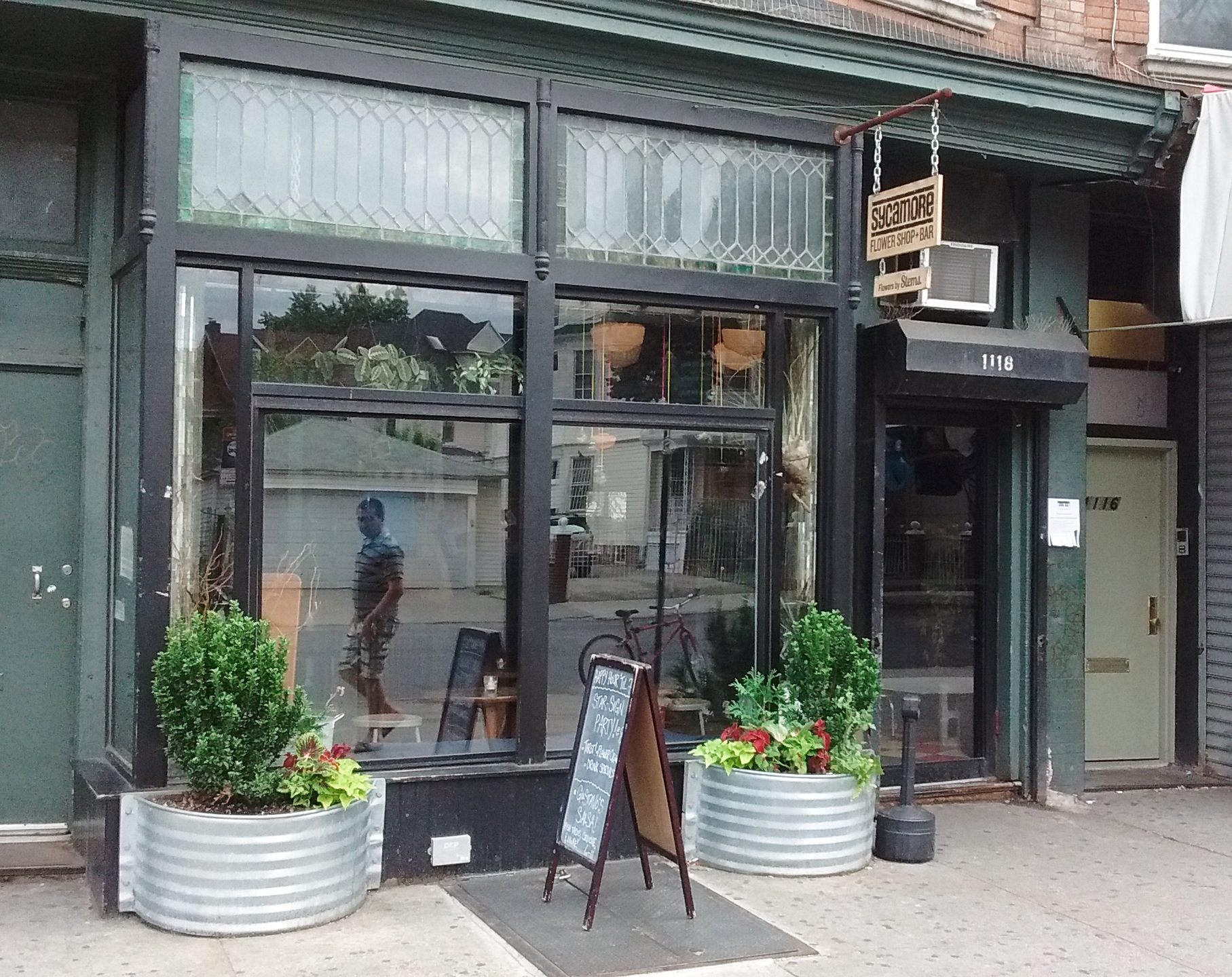
Sycamore Flower Shop and Cafe. (Photo: Daniel Levinson Wilk)
Sycamore once ran its own flower shop, but decided a few years ago to lease the space to an entrepreneurial former employee named Suzanna Cameron, who renamed the business Stems; it continues to operate from the front room of the bar, and in the back garden a rotating set of food vendors operate under the name Flatbush Food Court.
On Essex Street in Manhattan, next to the world’s first underground park, Beauty & Essex adds a pawnshop to a restaurant that is a popular brunch spot and nightclub. Beauty & Essex is more corporate than other service hybrids—one of several “concepts” in the Tao Group hospitality chain—with another location in Las Vegas. Whatever the complementarities of eating, drinking, and pawning one’s things, Beauty & Essex faces a fundamental moral contradiction.
A business that brings members of the public to its table, welcomes them as guests, and also offers to loan money at interest is sending a mixed message. The veneer of extra-commercial values that bars, restaurants, and hotels have lacquered on themselves for two centuries is pulled away in an instant.
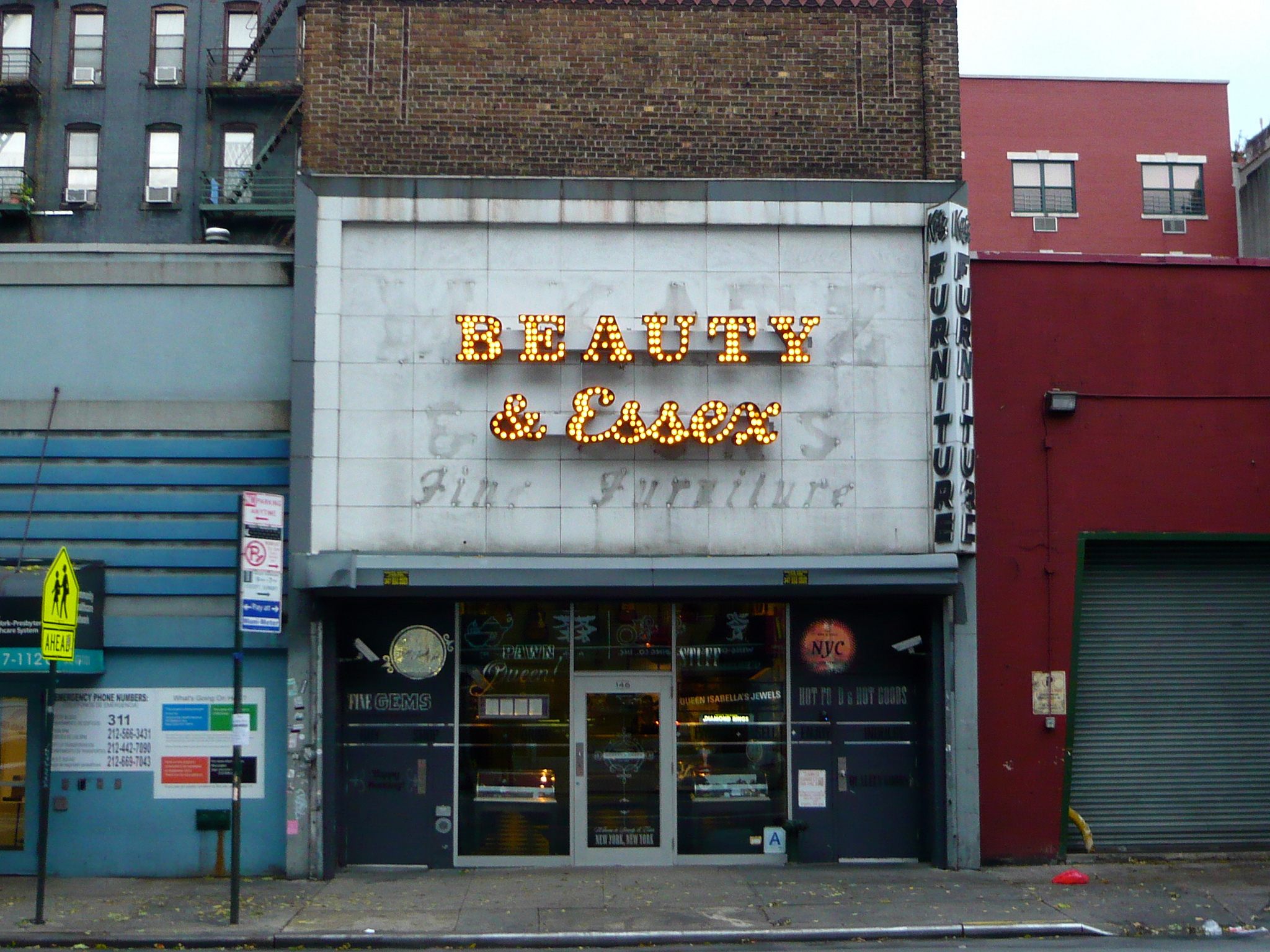
Outside Beauty & Essex in New York. (Photo: Jessica Spengler/CC BY 2.0)
Is the next big service hybrid the bar-flower shop, bar-guitar shop, car wash-donut shop, or restaurant-pawn shop? Unfortunately, the Tao Group’s financial weight and orientation toward growth make it most likely we will see more outposts of Beauty & Essex. In fact, another one is already planned for Los Angeles.
Back at Sycamore, bartender and patron have other ideas. Behind the bar, John Hagan predicts that the prison industrial complex will soon begin to merge with the nascent 3-D printing industry.
From her stool, Yolanda DosSantos sips her drink and reminisces about the early days of “my flower bar,” the years just after it opened in 2008, when it felt like the most vibrant drinking hole in the world. She hopes the future will bring a dog-friendly bar, perhaps a bar-pet store.



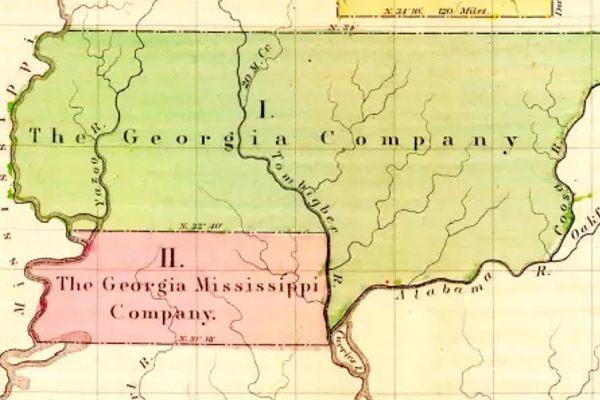

















Follow us on Twitter to get the latest on the world's hidden wonders.
Like us on Facebook to get the latest on the world's hidden wonders.
Follow us on Twitter Like us on Facebook